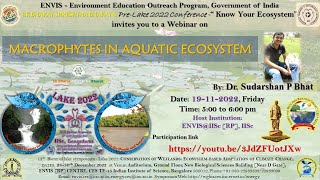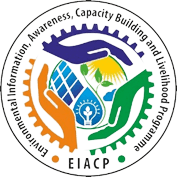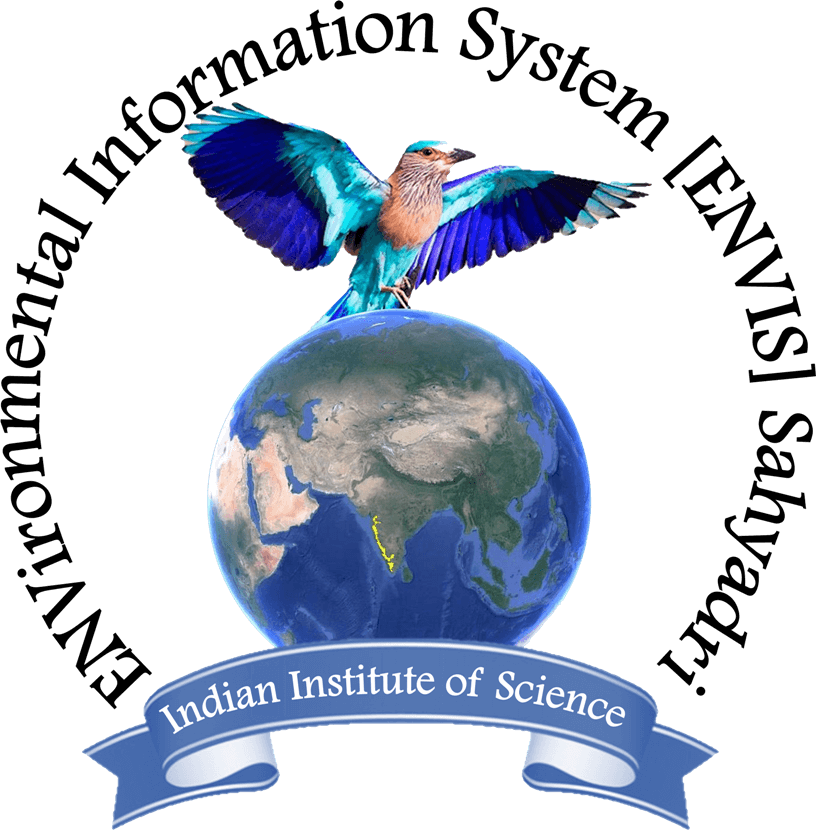Webinars
Title: The Jumbo science: Understanding the basics of elephant ecology
Speaker: Dr Sanjeeta Sharma Pokharel, Smithsonian Postdoctoral Fellow, Visiting Scientist @CES, IISc
Date: 04/1/2022
Link: https://youtu.be/klMbL2PFN7w
Abstract:
Wildlife ecology is one of the emerging branches of biology. The rapidly deteriorating natural habitats necessitate understanding the wildlife present in such habitats and their conservation. One of the megaherbivores that are highly susceptible to massive scales of ecological changes is elephants. In this lecture, I will introduce basic concepts behind elephant biology, stress physiology and conservation-related issues; highlighting the significance of the field ecology and wildlife biology.
Invitation:
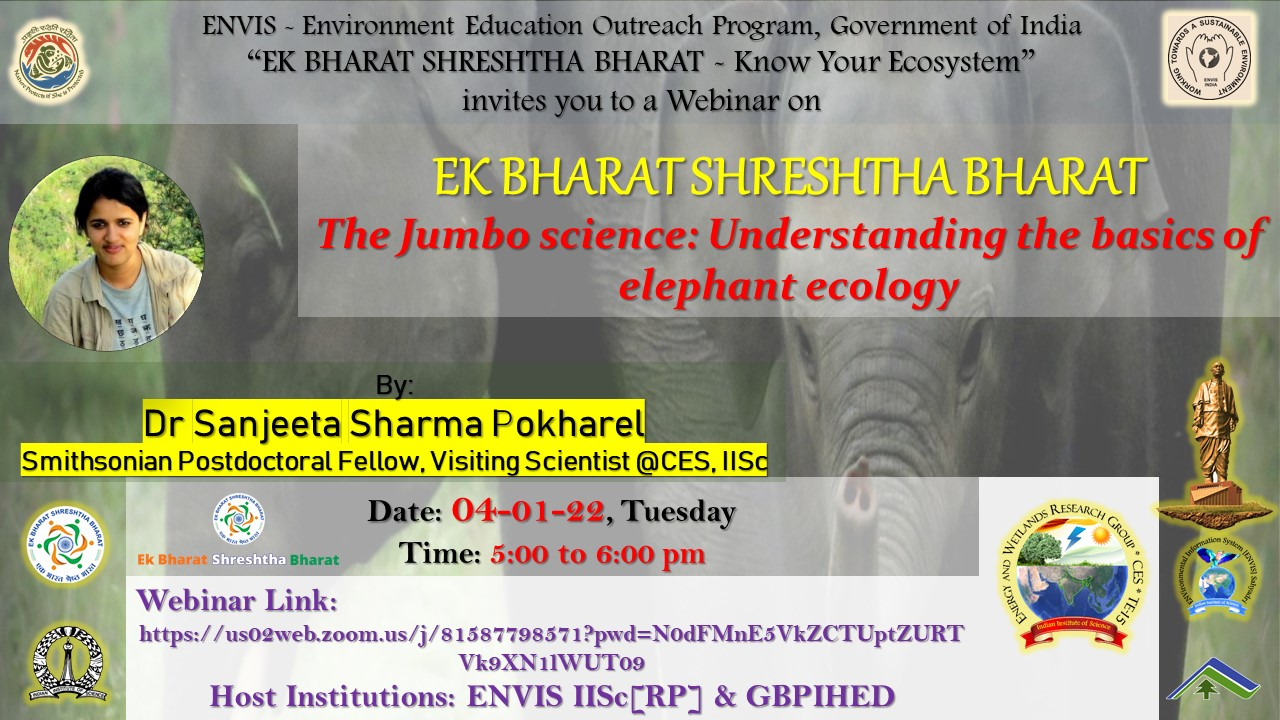
Title: Ecosystem Restoration to Meet Agenda 2030 -Conservation initiatives at TATA steel
Speaker: Dr Hishmi Jamil Husain, Head Biodiversity, Corporate Sustainability
Date: 24/01/2022
Link: https://youtu.be/hRs1AsQLkyo
Abstract:
Nature’s Dangerous Decline ‘Unprecedented’ Species Extinction Rates ‘Accelerating’ Current global response insufficient. We need ‘Transformative changes’ to restore and protect nature. More than 1,000,000 species threatened with extinction. Nature underpins our societies, our economics and our physical wellbeing. Loss of nature has direct implications for us all who are depended heavily on nature. Nature loss increases their vulnerability to natural disasters and climate change. Nature’s decline directly impacts on the security of future generations. Ecosystem restoration means preventing, halting and reversing this damage to go from exploiting nature to healing it. Only with healthy ecosystems can we enhance people’s livelihoods, counteract climate change and stop the collapse of biodiversity. Recognizing the impact on nature across all sectors, and the need to work together to restore it, is the first step for developing a coalition for the nature and people agenda. Protecting and caring for nature is not simply a moral responsibility; it is essential to our well-being, and indeed our survival. Sustainable Development Goals (SDGs) are targets to tackle the world’s most pressing social, economic and environmental challenges. SDGs are developed by engaging with stakeholders including businesses. It make accountability of implementation to all sectors with time bound targets taken by 2030. Which is also famous as Agenda 2030.
Invitation:
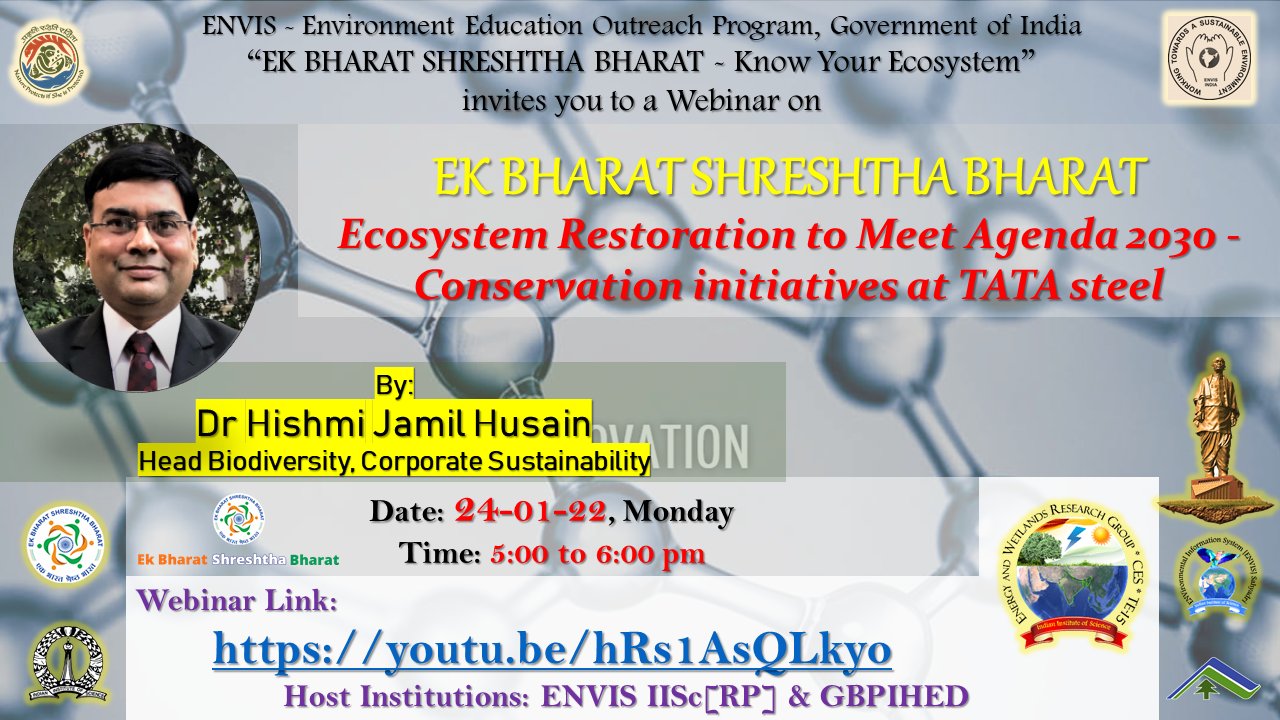
Title: Mangroves never die: yet, understanding their resilience, succession and restoration is critical
Speaker: Dr Nehru Prabakaran, DST-INSPIRE Faculty, Wildlife Institute of India
Date: 04/02/2022
Link: https://youtu.be/ztUcGm3tjxA
Abstract:
Mangroves, a unique ecosystem that inhabits the ocean and land interface, play a critical part in maintaining the coastal and marine biodiversity. Having inhabiting the inter-tidal zones in the densely populated tropical coastal lines, mangroves are frequently subjected to a number of disturbance factors related to human and natural sources. Especially, forest clearing for development and agriculture purposes was reasoned for the continuous decline of mangroves globally. Additionally, management and conservation of mangroves might see an uncertain future due to the sea-level rise. In this context, this talk will address a few critical challenges for mangrove conservation globally and provide optimism for mangrove conservation in India.
Invitation:
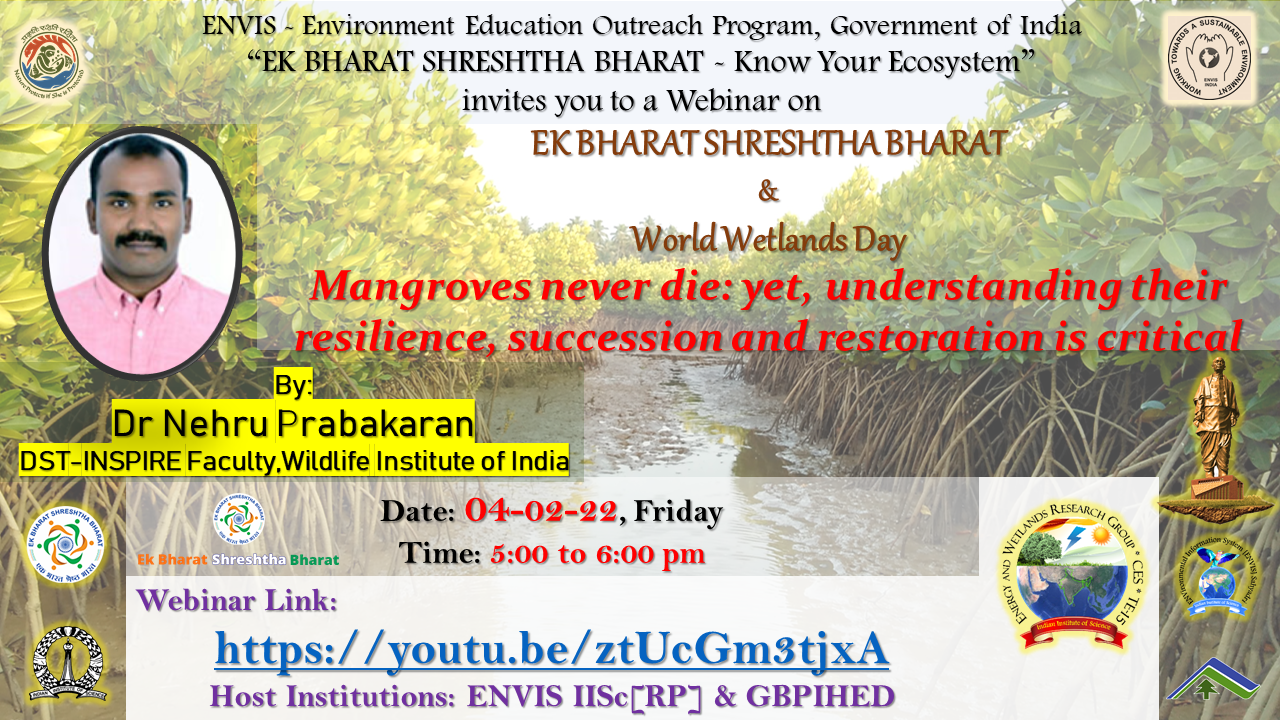
Title: Nature-based Solutions (NbS), for Disaster Risk Reduction (DRR), & Climate Change Adaptation (CCA)
Speaker: Dr. Shalini Dhyani, Senior Scientist, CSIR-NEERI
Date: 22/02/2022
Link: https://youtu.be/1uk-SfvTjlc
Abstract:
Increasing climate variability and multi-dimensional vulnerabilities have severely affected the social, ecological, and economic capacities of the people in the region. Climatic and anthropogenic risks, coupled with weak and wavering capacities, severely impact the ecosystems and Nature's Contributions to People (NCP) and, thereby, to human well-being. Nature-based Solutions (NBS) as a cost-effective approach utilizes ecosystem and biodiversity services for addressing diverse societal challenges, while also providing a range of co-benefits like sustainable livelihoods and food, water, and energy security etc. NBS can be used to address and realize diverse global targets with active community participation.
Invitation:
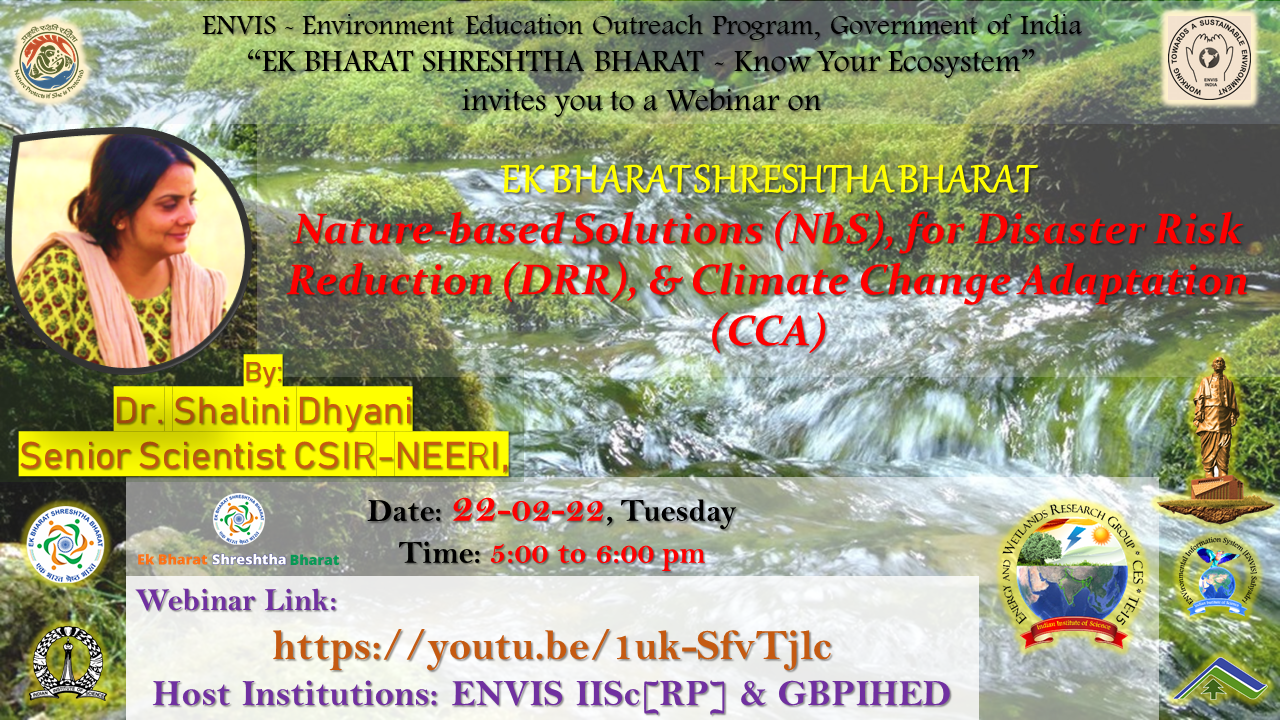
Title: The lion-tailed macaque [LTM] conservation initiatives from the Central Western Ghats
Speaker: Dr. Honnavalli N. Kumara, Principal Scientist, SACON
Date: 04/03/2022
Link: https://youtu.be/ioc-W73Nwl8
Abstract:
The forests of Aghanashini Lion-tailed Macaque Conservation Reserve which inhabits the largest population of LTM in the contiguous forest also have the highest rate of deforestation with a loss of 11.50% of evergreen forests at the rate of 1.90% loss yearly. They coexist with about 15000 people. The reason for this is the high dependence of people for firewood to process the rind of Garcinia gummi-gutta conventionally, and the gradual conversion of the rainforest into agriculture. The consequence of this may lead to fragmentation of habitat that may result in the largest population to smaller sub-populations. The initiatives taken to address these issues are discussed.
Invitation:
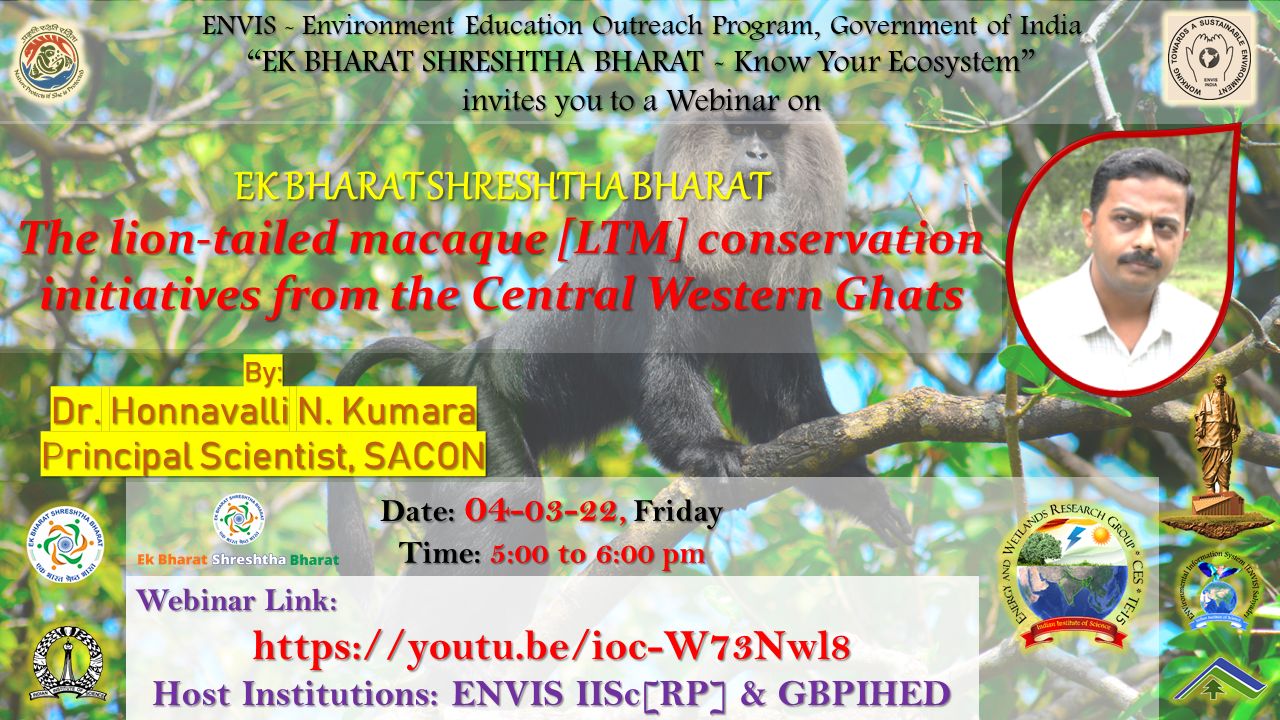
Title: Water conservation through Sustainable approaches
Speaker: Dr. Harikumar PS, Sr. Principal Scientist, CWRDM
Date: 30/03/2022
Link: https://youtu.be/qMwApPo6RCI
Number of participants: 80
Abstract:
The amount of water used in a country not only depends on minimum requirement and/or how much water is available, but it also depends on the levels of economic development and urbanisation. People use water for a wide variety of activities. It is difficult to estimate the amount of water essential to maintain a minimum living standard. A person needs 1 or 2 litres of water per day to survive, and it is also required for other domestic, industrial, and agricultural needs. Different agencies and organizations have been proposed different amounts of water as the minimum standards. According to World Health Organization (WHO), minimum “survival” allocation (sustainable for few days) of water is 7 litre percapita per day (lpcd) and medium-term allocation (sustainable for few months) is 15-20 lpcd. According to International norms set out by the agencies such as World Health Organization (WHO) and UNICEF, minimum requirement of water is 20 litres per person per day from a source within 1 kilometres of the household. This is sufficient for drinking and basic personal hygiene. But the average water use of the countries varies from 10 to 575 lpcd, in which the highest water usage (575liters) reported for United States and lowest (10 litres) for Mozambiquueis. In India, the average water usage for the domestic needs is 135 lpcd. The water use and wastewater generation are interrelated. The volume of wastewater generated by domestic, industrial, and commercial sources has also increased with population, urbanization, improved living conditions, and economic development. It is the main cause of pollution of rivers, lakes, and other natural water resources. Central Public Health and Environmental Engineering Organization (CPHEEO) estimates, about 70-80% of total water supplied for domestic use gets generated as wastewater. According to WHO (2006) from the total water use, 80% is discharged as wastewater. Much of the daily-generated wastewater is recognized as greywater. The total volume of greywater from the average household represents about 60% of the generated wastewater. Discharges of untreated greywater often create pressure on the natural water bodies and deteriorate its quality. Assessment of the existing or potential magnitude of wastewater and greywater management will provide a key to the policy formulation or adjustment that may be needed. An understanding of the quantity and quality of the wastewater is essential in the design and operation of collection, treatment, and reuse facilities and in the management of environmental quality. Efficient wastewater management system together with the conservation of water resources should be an important component for the implementation of any water management policy.
Invitation:
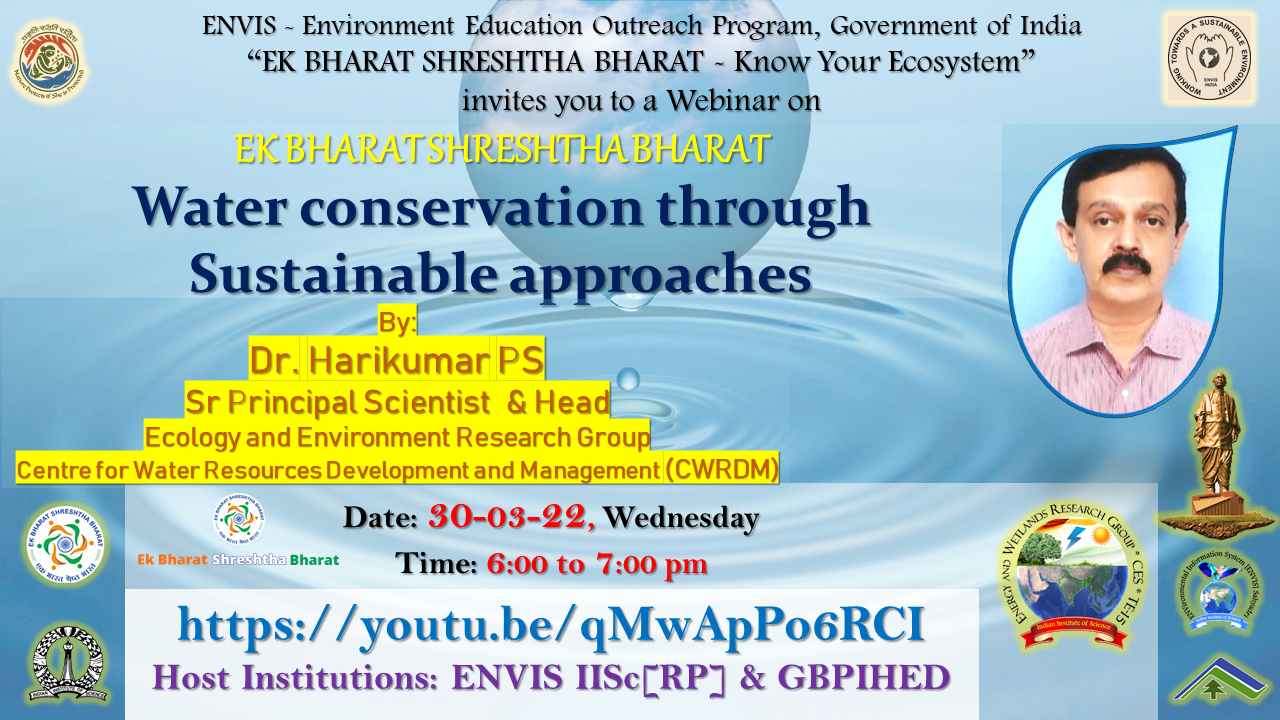
Title: Mangroves: Root of the sea
Speaker: Dr. Kathiresan K,
Centre of Advanced Study in Marine Biology, Annamalai University, Tamil Nadu, India
Date: 08/04/2022
Link : https://youtu.be/5NdI6MQBzoo
Number of participants: 90
Abstract:
Mangroves are the only tall tree forest, located in the intertidal areas of tropical and warm temperate coasts. They are biologically diverse, providing habitat to both aquatic and terrestrial organisms. The mangroves are structurally simple type of forest system with high productivity in the intertidal and estuarine areas, and their standing crop is greater than any other aquatic systems on the earth. They are an extremophilic system, capable of surviving in the adverse coastal environment, due to remarkable adaptations, and no other groups of plants in the entire plant kingdom with such adaptations to survive. The mangroves are a rare type of forest with only about 80 tree species, occupying 13.8 million hectares in 118 countries and territories. They support fish production, carbon sequestration, climate change mitigation, pollution removal, ecotourism, forest products, and coastal protection against natural calamities. Mangrove forests of India are globally unique to have the highest record in biodiversity in the world, with the presence of ‘mangrove genetic paradise’ in Bhitarkanika and Sundarbans with globally threatened wildlife species. Despite increasing pressures, Indian mangrove cover is increasing due to management, efficiently practiced in 38 selected areas; but, a large tract of the forest has a sparse stand.
Invitation:
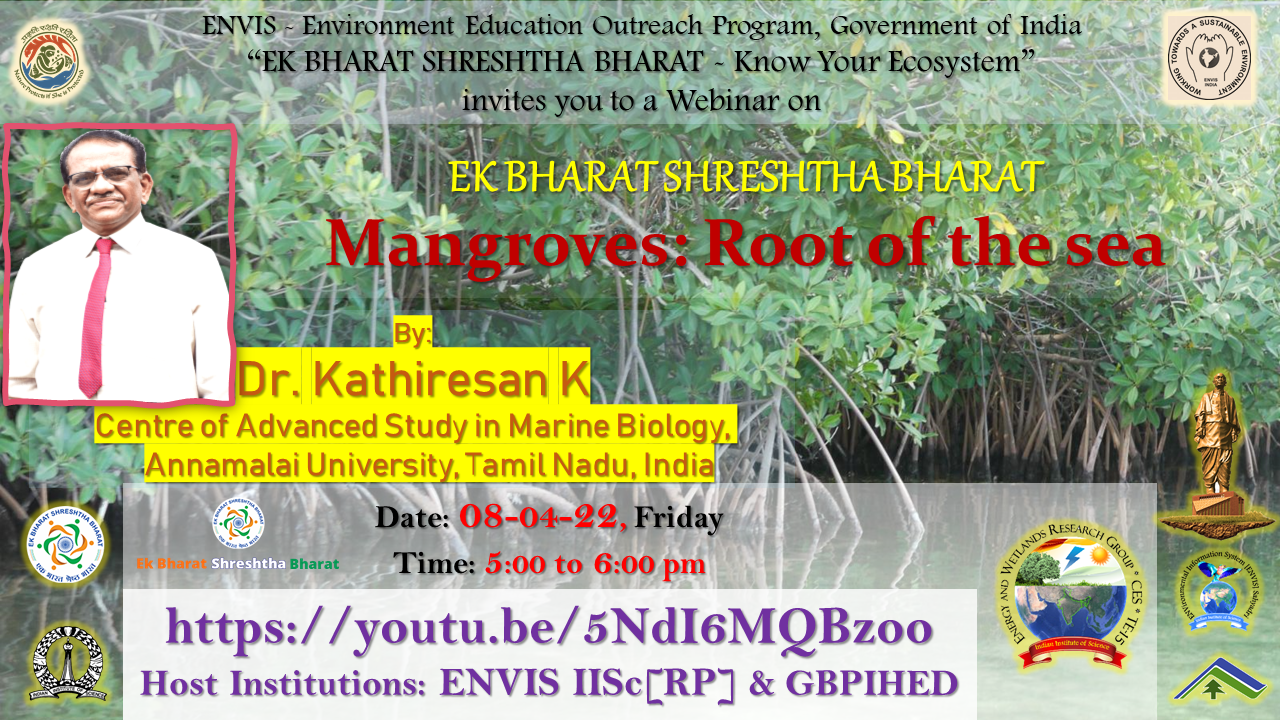
Title: Freshwater Animal Biodiversity of India and Conservation Challenges
Speaker: Dr K.A. Subramanian,
Scientist-E, & Officer-in-Charge
Southern Regional Centre, Zoological Survey of India, MoEFCC
Date: 03/05/2022
Link : https://youtu.be/MZft7U4NghE
Number of participants: 116
Abstract:
Globally, freshwater ecosystems comprise only about one percentage of habitats. However, they harbour disproportionately high level of biodiversity. They support nearly 150,000 of described species including 55% of fishes. Freshwater biodiversity provides important ecosystem services and provide livelihood for millions. In India, nearly 10,000 species of invertebrates and vertebrates are recorded from the freshwater ecosystems. Though many freshwater ecosystems of India are protected, several species are threatened due to over exploitation, habitat alteration, habitat destruction and pollution. The freshwater biodiversity is also threatened by the impact of invasive alien species of plants and animals.
Invitation:
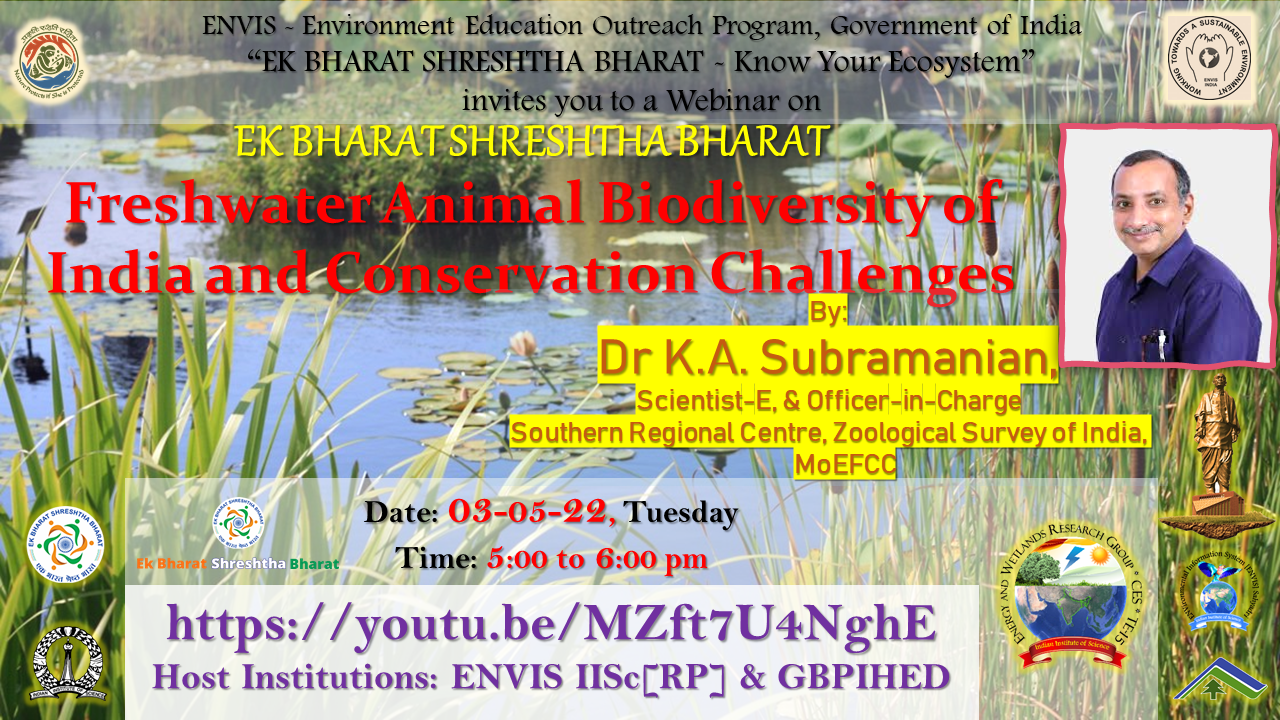
Title: Bio indicators for Biodiversity Monitoring and Ecosystem Health
Speaker: Dr V.P. Uniyal
Wildlife Institute of India,
Chandrabani, Dehradun
Date: 24/05/2022
Link https://youtu.be/byQ1vrwZ6TU
Number of participants: 95
Abstract:
Bio-indicators include biological processes, species, or communities and are used to assess the quality of the environment and how it changes over time. There is increasing demand to identify the bio-indicators corresponds to the need to state an efficient and cost-effective means for the formulation, implementation and evaluation of conservation policies. Changes in the environment are often attributed to anthropogenic disturbances (e.g., pollution, land use changes) or natural stressors (e.g. drought, late spring freeze). Understanding the response of species to forest fragmentation and landscape modification is essential for ecological monitoring and also for the formulation of effective conservation program and areas. Bio-indicator based ecological monitoring can provide advanced warning of undesirable ecological change such as habitat degradation and alteration, anthropogenic pressure and natural stressors, thus permit managers to adopt an adaptive management approach to conserving biodiversity. Distributions of insects are strongly influenced by the vegetative cover, fragmentation, physical structure, environmental elevation and also anthropogenic disturbances in forest fragments severely affected composition and distribution of increase increasing the isolation of populations and negatively affect the various ecological processes hence they can perform as a very excellent indicator of ecosystem health and can be used for ecological monitoring.
Invitation:
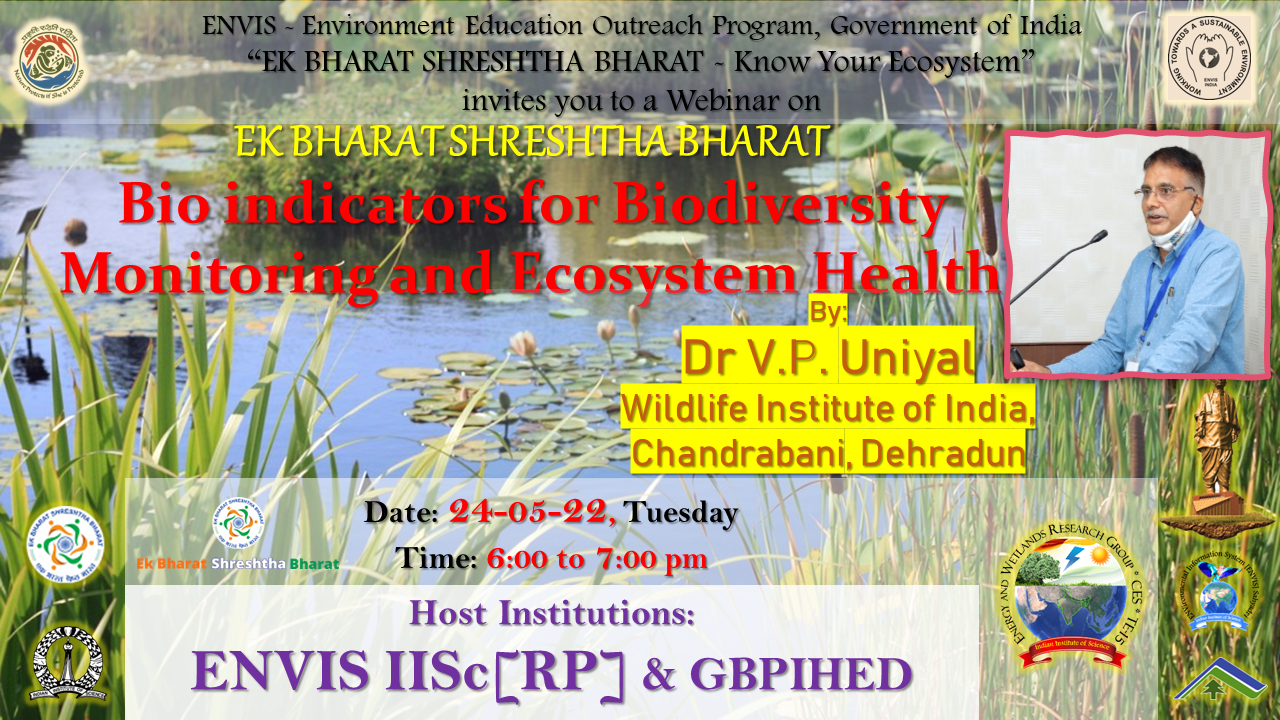
Title: Ecology and Conservation of Bamboo resources
Speaker: Dr S.N. Prasad
OSGEO-India, Former Senior Principal Scientist, SACON, Hyderabad
Date: 06/06/2022
Link: https://youtu.be/GNp81UJDxCs
Number of participants: 93
Abstract:
Bamboo, considered as poor mans' timber is an ecologically fascinating giant grass. Occuring in a wide variety of edaphic, climatic and biogeographic zones and widely distributed all over the world, Bamboo has unique Ecological, nutritional and socio- cultural significance. Occurring in a variety of successional stages, has significant values for wildlife conservation. This talk dwells on ecology of two major species of Bamboo, viz, Bambusa arundinacea and Dendrocalamus strictus with special reference to Karnataka . The flowering cycles of these two species also will be discussed in the talk. Reasons for decline of bamboo stocks including habitat changes and role of overexploitation will be discussed. Possible conservation strategies as well will be dealt with.
Invitation:
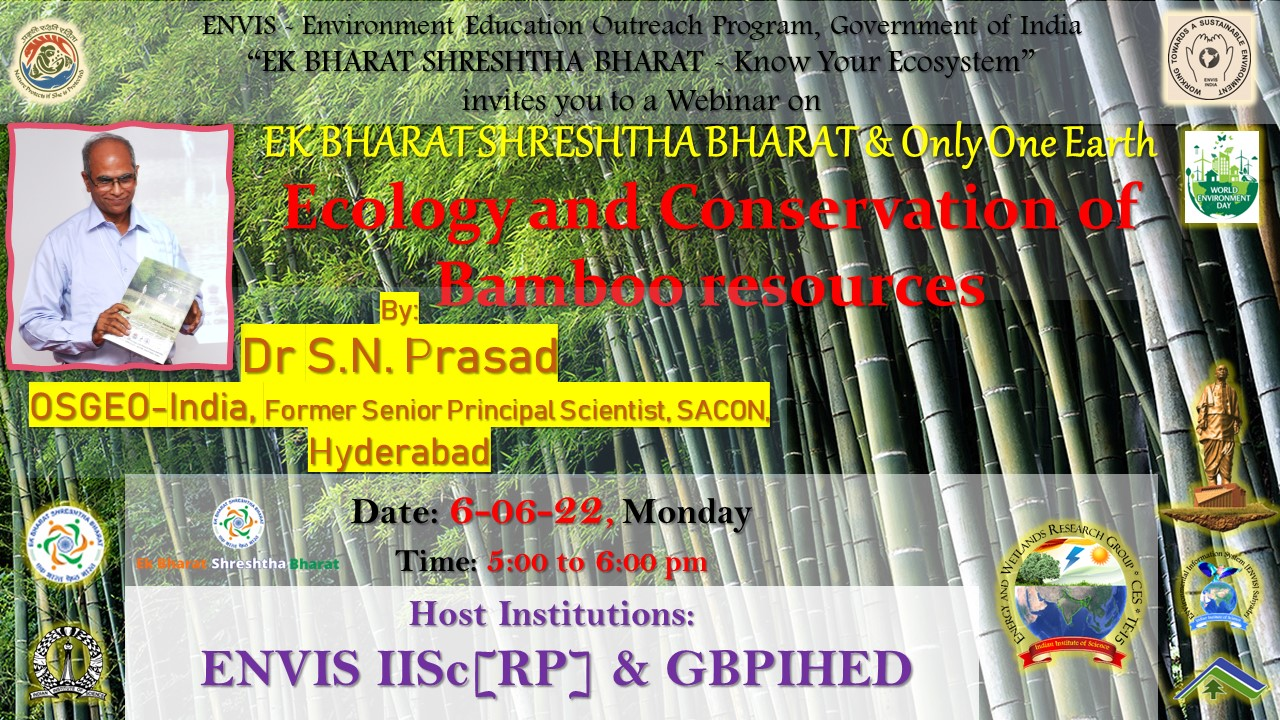
Title: Macrophytes in Aquatic Ecosystem
Speaker: Dr. Sudarshan Bhat, Assistant Professor, SDGM college, Ujire
Date: 19/11/2022
Link: https://youtube.com/live/3JdZFUotJXw
Abstract:
Aquatic macrophytes are the vascular plants that are normally found growing in wetlands, either in or on the water, or where soils are flooded or saturated long enough for anaerobic conditions to develop in the root zone. The aquatic macrophytes occur mainly in the shallow region of lakes ponds, pools, marshes streams and rivers etc. Macrophytes are of considerable ecological and economic importance as they help in the uptake of nutrients and hence help in maintaining the chemical integrity of the respective ecosystem. They contribute significantly to the productivity of water bodies; mobilize mineral elements from the bottom sediments and provide shelter to aquatic macro invertebrates and fishes. They also respond to changes in water quality and have been used as indicators of pollution and are known as ‘bio-indicators’. When there is enough room for colonization and abundant availability of nutrients, macrophytes show a high growth rate. They assimilate nutrients directly into their tissues. Due to these they were used to solve eutrophic problems of freshwater bodies and to remove pollutants. Aquatic macrophytes belong to the following 3 categories on the basis of their habit: Emergent, free-floating, floating leaved and submerged types. Through photosynthesis, they link the inorganic environment with biotic one. Macrophytes have major effects in terms of physical (temperature, light penetration, soil characteristics) and chemical environment of wetlands (dissolved oxygen, nutrient availability) and provide the basis of support for all wetland biota.
